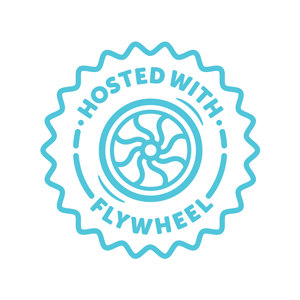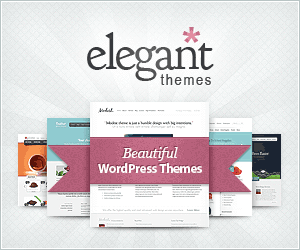Website speed optimization tips: Top 10 essential hacks
Website speed optimization tips are crucial for delivering a stellar user experience and boosting conversion rates. If your site is slow, users will bounce, and potential customers will get frustrated. To ensure your site is fast and engaging, focus on these essentials:
- Optimize image sizes
- Use a Content Delivery Network (CDN)
- Minify CSS, JavaScript, and HTML
- Enable browser caching
- Conduct regular speed tests
These actionable steps will enable you to improve your site’s speed significantly.
In today’s digital landscape, a fast-loading website is not merely a nice-to-have; it’s a necessity. As discussed in a recent Portent study, faster load times lead to a marked increase in conversion rates, with a one-second load time resulting in conversion rates three times higher than a five-second load time.
I’m Randy Speckman, founder of Randy Speckman Design. With years of experience optimizing websites for speed, I understand how crucial it is for small businesses to have high-performing sites. My team and I have worked with hundreds of entrepreneurs to drastically improve their websites’ performance and ensure they capture leads and maintain loyal customers. Now, let’s explore why website speed matters so much and what you can do to make yours faster.

Website speed optimization tips further reading:
– ecommerce conversion optimization tips
– mobile friendly website design
– user experience web design
Understanding Website Speed Optimization
Website speed is a big deal. Imagine clicking on a site and waiting… and waiting… before anything happens. Frustrating, right? That’s why website speed optimization is essential. It ensures that users have a smooth experience, which keeps them happy and engaged.
Website Speed Metrics
To make your site faster, you need to know what to measure. Key metrics include:
-
Time to First Byte (TTFB): This measures how long it takes for a user’s browser to receive the first byte of data from your server. A shorter TTFB means a faster site.
-
First Contentful Paint (FCP): This is when the first piece of content appears on the screen. It’s crucial because users start to see that the site is working.
-
Largest Contentful Paint (LCP): This tells you when the largest piece of content becomes visible. For a good user experience, aim for this to happen within 2.5 seconds of when the page first starts loading.
-
Cumulative Layout Shift (CLS): This measures visual stability. If elements on your page move around while loading, it can be annoying for users.
These metrics are part of Google’s Core Web Vitals, which are essential for understanding how your site performs in real-world conditions.

User Expectations
Users today expect sites to load fast. In fact, studies have shown that if a page takes longer than three seconds to load, more than half of mobile users will leave. That’s a lot of potential customers lost due to slow speeds. Fast sites make users happy, and happy users are more likely to stick around, explore, and convert.
Core Web Vitals
Google’s Core Web Vitals are a set of specific factors that Google considers important in a webpage’s overall user experience. They focus on:
- Loading: How quickly does the main content load? (Measured by LCP)
- Interactivity: How quickly can users interact with the page? (Measured by First Input Delay, or FID)
- Visual Stability: Does the content shift around as it loads? (Measured by CLS)
These vitals are not just recommendations; they are ranking factors. Google uses these metrics to help determine how your site ranks in search results. So, optimizing for Core Web Vitals is not just about user experience—it’s also about visibility and traffic.
Incorporating these metrics into your optimization strategy will help you create a site that not only meets user expectations but also performs well in search engine rankings.
Next, we’ll dive into the Top 10 Website Speed Optimization Tips to help you get started on boosting your site’s performance.
Top 10 Website Speed Optimization Tips
Use a Content Delivery Network (CDN)
A Content Delivery Network (CDN) is like having a team of relay runners positioned around the globe, ready to deliver your website’s content to users as quickly as possible. By storing copies of your site’s static content on servers in various locations, a CDN minimizes the distance between the server and the user. This significantly reduces load times, especially for users who are far from your primary server. For businesses in Tri-Cities WA or Kennewick WA, using a CDN can improve user experience by ensuring fast content delivery, no matter where your visitors are located.
Optimize Image Sizes
Images can be a major drag on website speed if not optimized properly. Use compression tools like TinyPNG or ImageOptim to reduce file sizes without losing quality. Additionally, responsive images that adapt to different screen sizes ensure you’re not loading unnecessarily large files on mobile devices. Switching to modern formats like WebP can also provide better compression than older formats like JPEG or PNG.
Minimize HTTP Requests
Each element on a webpage—images, scripts, stylesheets—requires a separate HTTP request. Fewer requests mean faster loading times. Combine files where possible, such as merging CSS and JavaScript files, to reduce the number of requests. Tools like Screaming Frog can help identify and streamline these requests.
Enable Browser Caching
Browser caching stores parts of your site on a user’s computer after their first visit. This means repeat visitors experience faster load times because their browser doesn’t need to re-download every file. Caching plugins, such as W3 Total Cache for WordPress, make this process simple and effective.
Implement GZIP Compression
GZIP and Brotli are popular file compression methods that can shrink your HTML, CSS, and JavaScript files by up to 70%. This means less data is transferred, speeding up the time it takes for pages to load. Most modern web servers support GZIP, making it a no-brainer for improving site speed.
Reduce Redirects
Redirects can create additional HTTP requests, slowing down your site. While sometimes necessary, such as when restructuring a site, they should be used sparingly. Regularly audit your redirects using tools like Screaming Frog to ensure they are still needed and eliminate any that are not.
Optimize Hosting Solutions
Choosing the right hosting solution is crucial for speed. Shared hosting, while cost-effective, can slow down your site due to shared resources. Consider upgrading to a Virtual Private Server (VPS) or a dedicated server for better performance. These options offer more resources and can handle higher traffic volumes, ensuring your site remains fast even during peak times.
Minify CSS, JavaScript, and HTML
Minification removes unnecessary characters from code, such as whitespace and comments, reducing file size and improving load times. Tools like UglifyJS and CSSNano can automate this process, making your site leaner and faster.
Use Asynchronous Loading
Asynchronous loading allows scripts to load independently, so they don’t block other elements of your page from rendering. This can significantly improve perceived load times, as users can start interacting with your site while other elements continue to load in the background.
Regular Speed Testing
Consistent testing is key to maintaining a fast website. Tools like Google PageSpeed Insights, Pingdom, and GTmetrix provide valuable data on your site’s performance and offer suggestions for improvement. Regular testing helps you catch issues early and keep your site running smoothly.
By implementing these website speed optimization tips, you’ll ensure your site not only meets user expectations but also performs well in search rankings. Up next, we’ll address some frequently asked questions about optimizing website speed.
Frequently Asked Questions about Website Speed Optimization Tips
How do I optimize my website speed?
Optimizing your website speed involves a few key strategies. Start with Google PageSpeed Insights, a free tool that analyzes your site’s performance and offers specific recommendations. For instance, it might suggest optimizing images, enabling compression, or reducing server response times.
Using a Content Delivery Network (CDN) is another effective method. A CDN stores copies of your site’s files across various geographical locations, ensuring faster access for users regardless of where they are. This reduces latency and speeds up load times.
Don’t overlook image optimization. Compress images using tools like TinyPNG or ImageOptim to reduce file sizes without sacrificing quality. Additionally, adopting modern image formats like WebP can significantly reduce loading times.
What is a good website speed?
A good website speed is typically defined by how quickly your site meets Core Web Vitals standards. These include metrics like Largest Contentful Paint (LCP), which should occur within 2.5 seconds, and First Input Delay (FID), which should be less than 100 milliseconds. Meeting these benchmarks ensures your site provides a smooth and responsive user experience.
User expectations are high; according to a Google study, 53% of mobile users abandon sites that take longer than 3 seconds to load. So, aiming for a load time under 3 seconds is a good rule of thumb.

How can I test my website speed?
Testing your website speed regularly is crucial. Google PageSpeed Insights is a great starting point, but it’s also wise to use other tools for a more comprehensive analysis.
Pingdom provides an easy-to-understand overview of your site’s speed and highlights areas for improvement. GTmetrix goes further, offering detailed insights and a waterfall breakdown of your site’s loading process.
For a broader perspective, SpeedLab tests your site across various devices and network conditions, ensuring you’re not just fast on desktops but also on mobile devices and slower connections.
By leveraging these tools, you can continuously monitor and improve your website’s performance, keeping it in line with both user expectations and search engine requirements.
Conclusion
At Randy Speckman Design, we understand that a high-performing website is crucial for any business looking to thrive in the digital age. Speed isn’t just about convenience; it’s a critical factor that impacts user experience, search engine rankings, and ultimately, conversion rates. Our expertise in digital strategy and conversion optimization allows us to create websites that not only look great but also deliver optimal performance.
Speed Equals Success
In today’s world, users expect websites to load in the blink of an eye. A delay of even a few seconds can lead to a significant drop in engagement and conversions. That’s why we focus on website speed optimization tips that ensure your site runs smoothly and efficiently. From utilizing Content Delivery Networks (CDNs) to optimizing image sizes and reducing HTTP requests, each strategy plays a vital role in enhancing your site’s speed and functionality.
Strategic Design for Maximum Impact
Our approach to web design goes beyond aesthetics. We integrate proven digital strategies that align with your business goals. By focusing on Core Web Vitals and other key metrics, we ensure that your website not only meets but exceeds user expectations. This commitment to quality and performance helps your business stand out in a crowded online marketplace.
Partner with Us for a Competitive Edge
Whether you’re in Tri-Cities WA or Kennewick WA, our team is ready to help you lift your online presence. We offer a comprehensive suite of services designed to boost your website’s performance and drive conversions. Our conversion rate optimization services are custom to meet the unique needs of your business, ensuring that every visitor to your site has a seamless and engaging experience.
In conclusion, optimizing your website speed is not just an option—it’s a necessity. By partnering with Randy Speckman Design, you gain access to a team of experts dedicated to helping your business succeed online. Let’s work together to create a high-performing website that delivers results and keeps your customers coming back for more.




